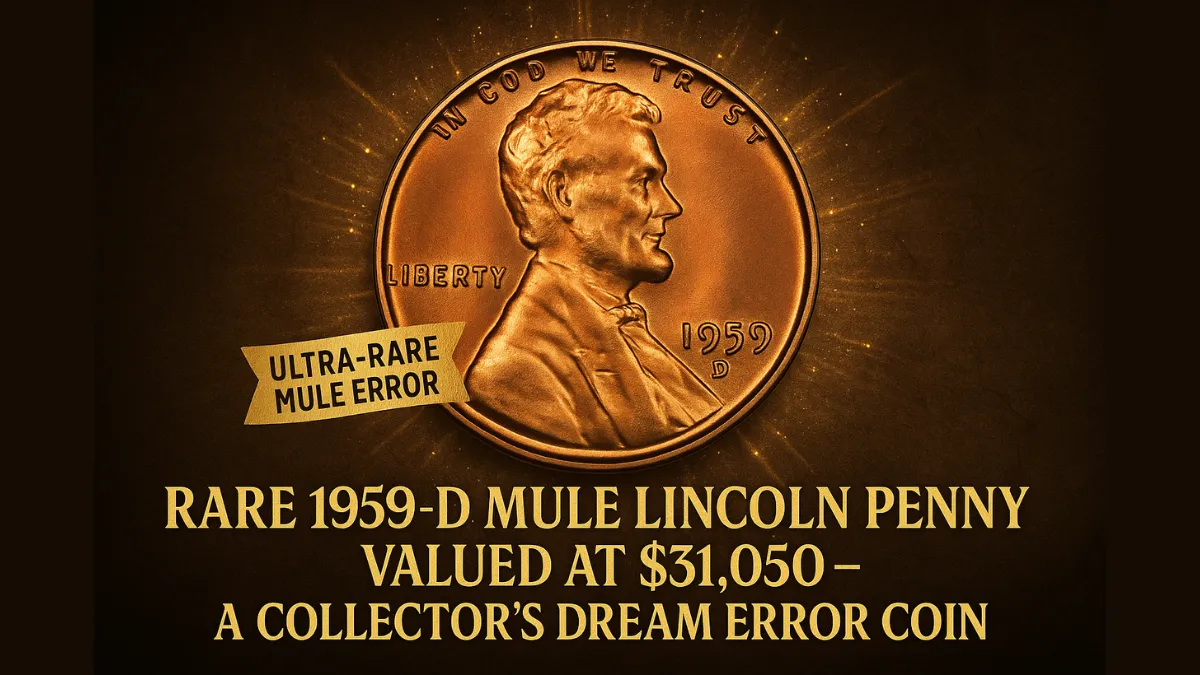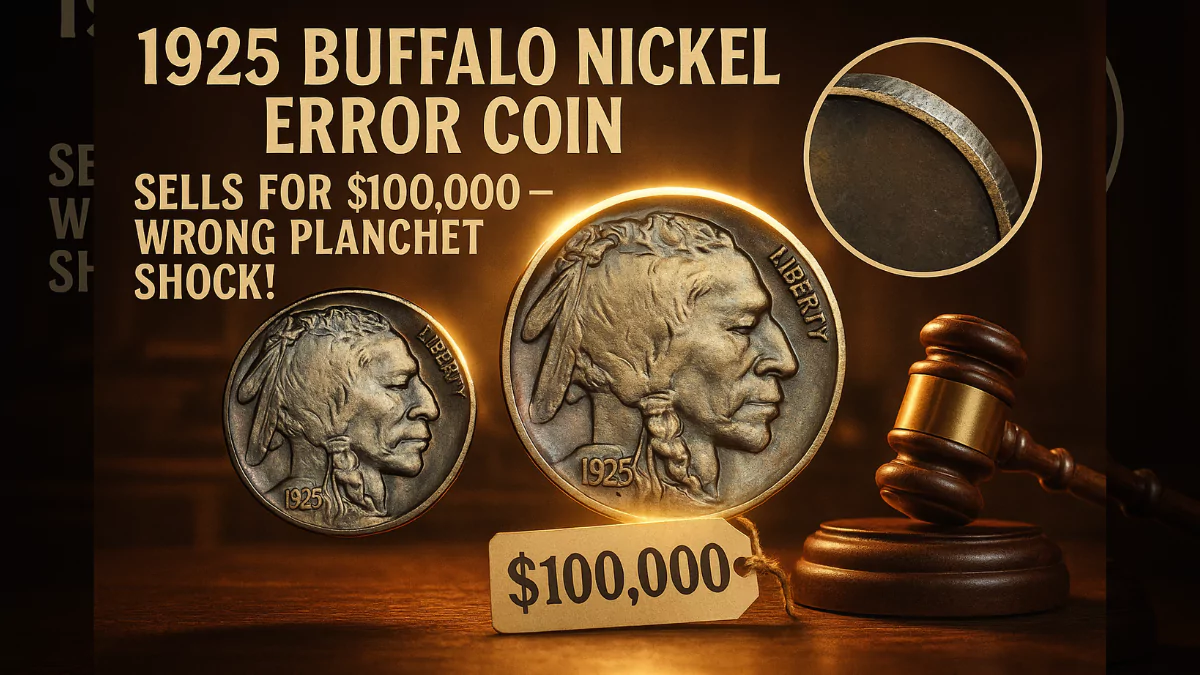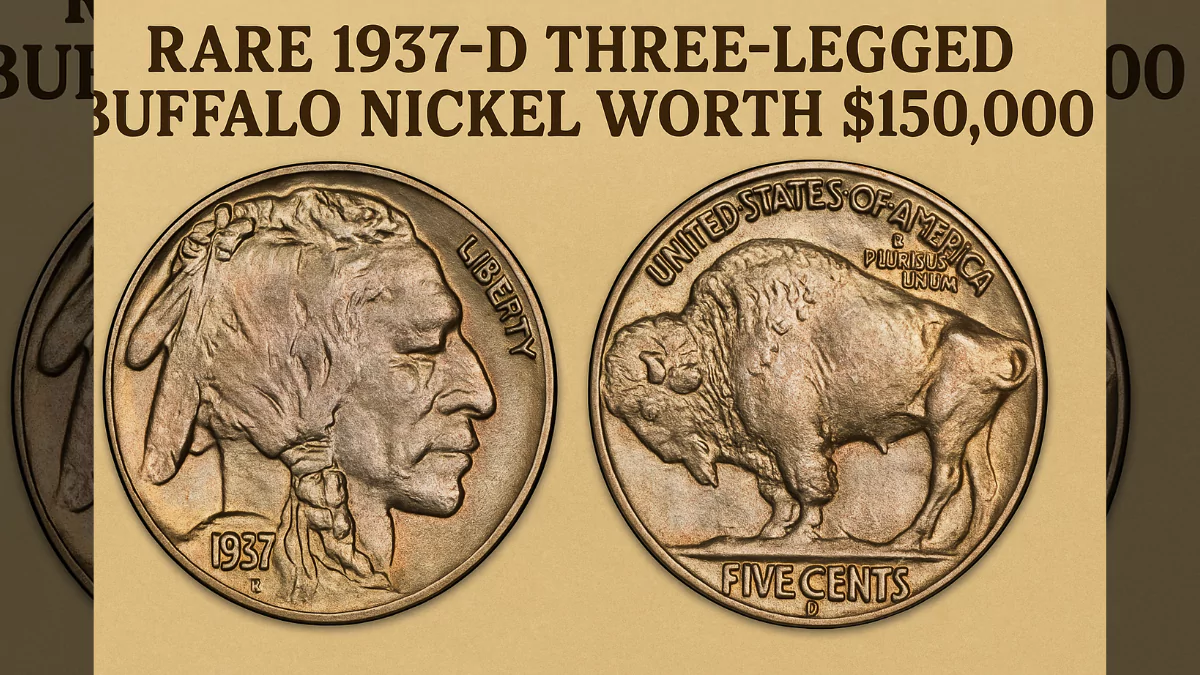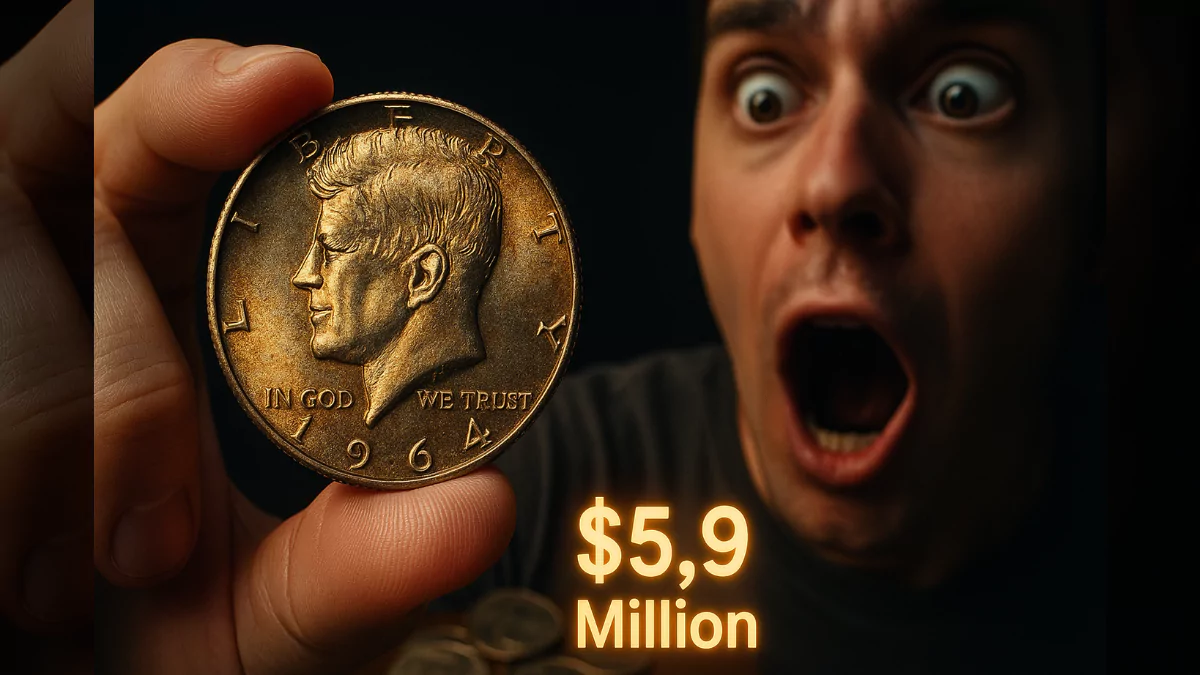And if you happen to spot one in your pocket change, how can you tell if it’s worth hanging onto?
If you’ve asked yourself those questions, you’re in the right place! In this guide, we’ll dive into the value of 1959 pennies, explore their history, and highlight the features that separate everyday coins from ones collectors love.
Curious to learn more? Let’s jump right in!
1959 Penny Value Chart*
| Mint Mark | MS63 | MS65 | MS67 |
|---|---|---|---|
| 1959 (P) No Mint Mark | $6 | $18 | $600 |
| 1959 D | $4 | $18 | $275 |
| PR60 | PR65 | PR69 | |
|---|---|---|---|
| 1959 (P) No Mint Mark Proof | $5<br/>Cameo: $10<br/>Deep Cameo: $14 | $15<br/>Cameo: $30<br/>Deep Cameo: $70 | $450<br/>Cameo: $2,000<br/>Deep Cameo: $21,500 |
*Values shown are for business strike coins with a “Red” (RD) designation.
History of the 1959 Penny
1959 marked the 150th anniversary of Abraham Lincoln’s birth. Though his face had graced the U.S. penny since 1909, the Mint decided to update the coin’s design to honor this milestone.
The original Lincoln cent, released in 1909, was groundbreaking as it was the first U.S. coin to feature a real person — President Lincoln — on its obverse. Its reverse design featured simple wheat ears, earning the nickname “wheat pennies.”
The 1959 update kept Lincoln’s profile but replaced the wheat ears with an image of the Lincoln Memorial, located in Washington, D.C.
Nearly two billion 1959 pennies were minted, most produced in Denver, with Philadelphia handling the rest — including over a million proof coins for collectors.
The reverse design was the brainchild of Frank Gasparro, the Mint’s Assistant Engraver at the time. This design remained on the penny until 2009, when the U.S. Mint introduced the “Union Shield” reverse to celebrate Lincoln’s 200th birthday.
Features of the 1959 Penny
The Obverse of the 1959 Penny
The front side of the 1959 penny showcases the iconic profile of Abraham Lincoln, facing right — a design created by artist Victor David Brenner.
Brenner based his work on a photograph, believed to have been taken by Matthew Brady or his assistants, depicting Lincoln in a quiet, reflective moment.
Originally, Brenner wanted to sign his full name on the coin, but this was rejected. Instead, his initials were placed discreetly on the reverse. Public backlash later led to their removal, but they returned in 1918, this time tucked along the lower edge of Lincoln’s bust, where they still appear today.
The obverse also includes the national motto “IN GOD WE TRUST” above Lincoln’s head, “LIBERTY” to the left, and the minting year to the right. If the coin was struck in Denver, a small “D” mint mark will appear just below the date. Philadelphia-minted coins lack a mint mark.
The Reverse of the 1959 Penny
For the first time, the reverse side featured the Lincoln Memorial, replacing the wheat design from earlier pennies. If you inspect it closely, you’ll even notice a tiny depiction of Lincoln seated inside the Memorial — making this one of the few U.S. coins to feature the same individual on both sides.
The reverse also reads “UNITED STATES OF AMERICA” along the top edge and “E PLURIBUS UNUM” just below it. The coin’s denomination, “ONE CENT,” is inscribed boldly at the bottom.
Other Features of the 1959 Penny
The 1959 penny shares the same specifications as its wheat penny predecessor: a diameter of 19mm, a weight of 3.11 grams, and a composition of 95% copper and 5% zinc.
Since copper reacts to air and handling, the color of these coins can vary from bright red to deep brown. Grading agencies classify them into three categories based on color: Red, Red-Brown, and Brown. Red pennies, which have retained their original copper hue over at least 95% of the surface, tend to be the most valuable.
1959 Penny Grading
| Grade | Description |
|---|---|
| 1 | Basal State-1 |
| 2 | Fair |
| 3 | Very Fair |
| 4-6 | Good |
| 7-10 | Very Good |
| 12-15 | Fine |
| 20-30 | Very Fine |
| 40 | Extremely Fine |
| 50 | About Uncirculated |
| 60 | Mint State |
| 65 | Mint State Gem |
| 70 | Perfect Mint State |
Proper grading is essential for determining a coin’s value. Be sure to consult a detailed grading guide for accurate assessment.
1959 Penny Value Guides
1959 (P) No Mint Mark Penny Value
Philadelphia produced fewer pennies than Denver in 1959, making these coins slightly more desirable to collectors.
To hold any significant value, a 1959 Philadelphia penny typically needs to be in mint state (MS63 or higher) and retain its red color. At MS63, such a coin might fetch $6, while a near-pristine MS67 example can command up to $600. Four known MS67+ examples are valued at around $3,000 each.
1959 D Penny Value
With nearly 1.3 billion pennies struck at the Denver Mint, this version is more common. Red coins graded MS63 start at around $4, rising to about $275 for an MS67. An exceptional MS68 Denver penny has been valued at $9,000, the highest known for this year and mint.
1959 (P) No Mint Mark Proof Penny Value
Philadelphia also produced 1,149,291 proof pennies in 1959, specially made for collectors. These coins, always graded “Red,” can carry additional value if they exhibit a frosted design against a mirror-like background, known as a “cameo” or “deep cameo.”
Proofs start around $5 at PR60, with top-tier PR69 deep cameos reaching as high as $21,500.
Rare 1959 Penny Error List
1959 D Mule Penny
A curious and controversial penny surfaced showing the 1959 obverse paired with the wheat reverse — which officially ended in 1958. Known as a “mule,” this error was surrounded by debate regarding its authenticity. Despite doubts, it sold for over $31,000 at auction.
1959 (P) No Mint Mark Penny, Double Die Obverse
A more verifiable error is the double die obverse from Philadelphia. This occurs when the die receives multiple misaligned impressions, causing a noticeable doubling effect, particularly on the date and “LIBERTY.”
The FS-101 variety is the most sought-after, with values ranging from $18 for MS60 examples up to $850 for MS66 specimens.
Where to Sell Your 1959 Penny
Now that you understand your coin’s potential worth, you might wonder where to sell it. Several reputable platforms offer appraisals and marketplaces for collectors. It’s always a good idea to research and compare services before selling to ensure you get the best value.
FAQs
How do I know if my 1959 penny is rare?
Start by checking its color — red coins are the most valuable, especially if they’re in high-grade condition. If the coin isn’t red, look for unique errors like double dies or a repunched mint mark. Rare anomalies, like the mule wheat reverse, can fetch impressive sums.
What is the most valuable 1959 D penny worth?
The highest-graded 1959 Denver penny, an MS68, is valued at around $9,000. The infamous mule error, despite lingering doubts over authenticity, fetched more than $31,000 at auction.




Donde se puede vender el centavo de 1959
It’s amazing to pay a visit this site and reading the views of all friends regarding this paragraph, while I am also keen of getting know-how.
I am not sure where you are getting your info, but good topic. I needs to spend some time learning more or understanding more. Thanks for excellent info I was looking for this information for my mission. http://www.hairstylesvip.com